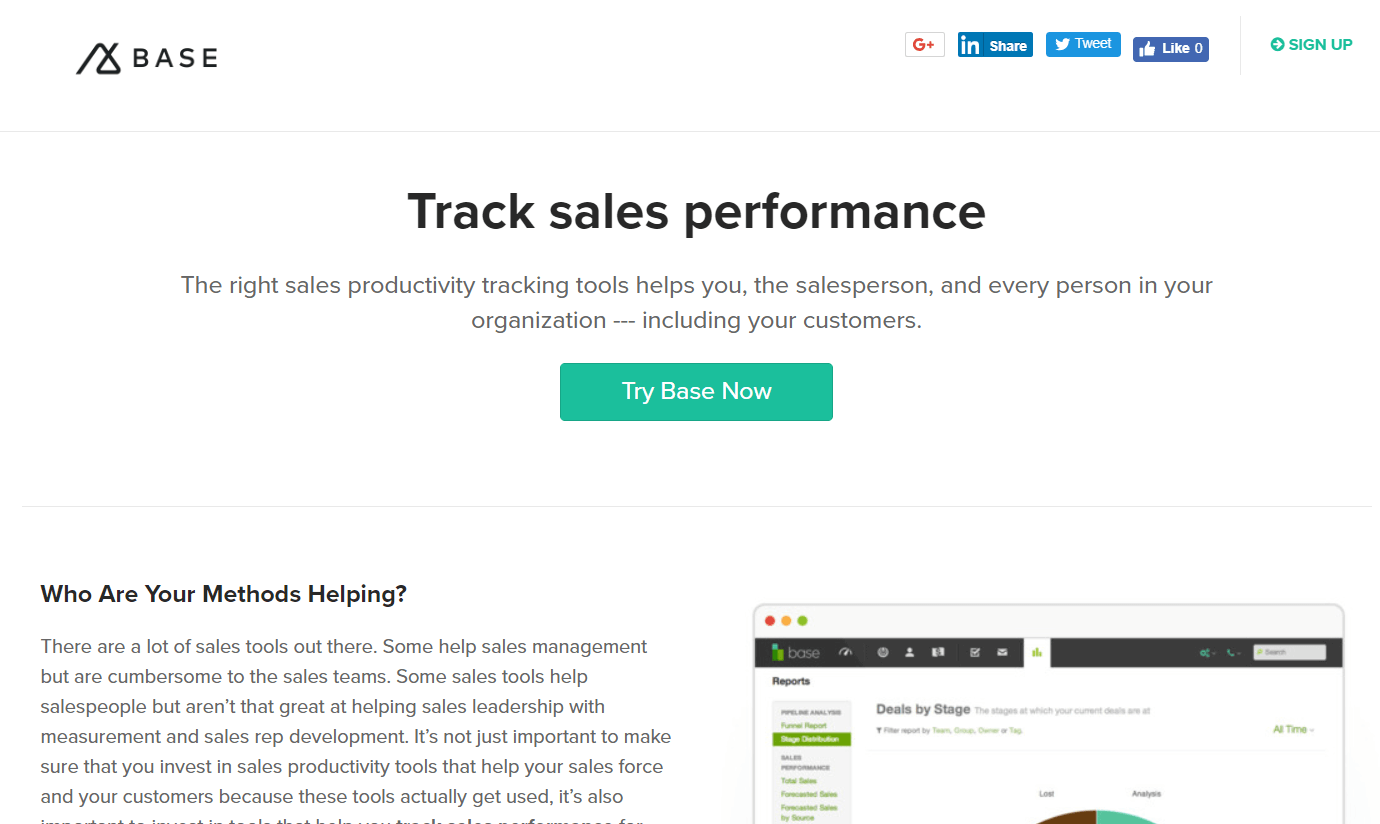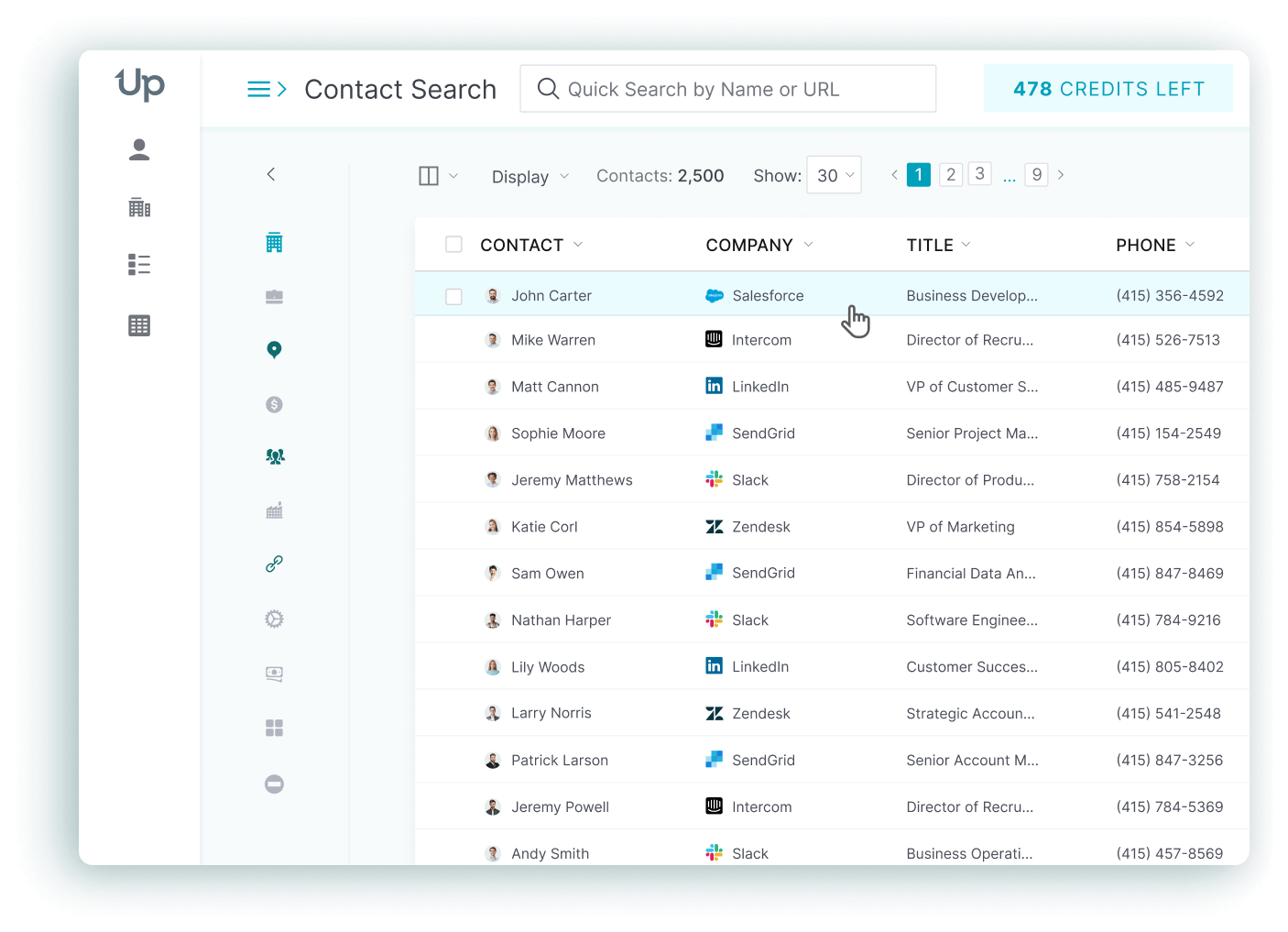Your sales team is under constant pressure to hit their numbers, but month after month, they keep falling short. You set targets, but they feel more like wishful thinking than a strategic plan. This leads to vague, unclear objectives that leave your team confused and directionless.
The consequences are brutal: top performers get frustrated, new hires struggle to ramp up, and team morale drops as the gap between quota and reality widens. You’re stuck in an endless cycle of firefighting, dealing with administrative burdens, and explaining missed forecasts to leadership, with no time left for the high-impact coaching that could turn things around. Studies show that as many as 91% of sales teams are affected by unrealistic quotas and market volatility, leaving sales reps feeling set up to fail.
It’s time to break the cycle. By implementing the proven SMART goal-setting framework, you can transform your approach from ambiguous to actionable. This guide will provide you with the exact steps and 19+ categorized examples to set clear, motivating, and achievable sales goals that align your team, drive sales performance, and crush those revenue targets.
What Are Sales Goals?
Sales goals are specific, measurable targets that define what sales teams and individual sales reps need to achieve within a set timeframe. Most of us know sales objectives as a set number as part of the sales pipeline. Revenue. Make $50k this month, and you’ve reached your sales goal. Well done!
But this article will change that perception. You won’t see a sales goal or target as just numbers on a screen anymore. You’ll see them as individual actions. Because a sale isn’t just a sale. A healthy sales cycle was planned out. A sales manager helped the team embrace its goals. Sales reps were involved in various sales activities, including sales calls, demos, and emails, necessary to secure that sale.

Breaking sales down into individual goals makes for a far more effective target. A more tangible target that transforms vague intentions into concrete actions your team can execute daily.
What Are SMART Sales Goals?
SMART sales goals are a framework for setting effective objectives by making them Specific, Measurable, Achievable, Relevant, and Time-bound. This structure transforms vague intentions into actionable targets, which is why it’s considered the gold standard in sales. It provides clarity, focus, and a shared vision for success that motivates sales teams and drives results.
Let’s break down each component of the SMART acronym:
- Specific: Goals must be clear and unambiguous, leaving no room for misinterpretation. Instead of a vague goal like ‘Increase sales,’ a specific goal would be ‘Increase sales of Product X by 15% in the Northeast region.’ This answers the questions of who, what, and where.
- Measurable: Goals must be quantifiable so progress can be tracked. This involves attaching concrete numbers and key performance indicators, such as ‘increase monthly revenue by 5% over the next quarter.’ This helps sales teams know if they are on track.
- Achievable: Goals should be challenging enough to motivate but still realistic given the team’s resources and historical data. Setting unattainable goals can lead to demotivation and frustration. For example, aiming to increase sales by 10% based on previous growth is achievable, whereas 100% might not be.
- Relevant: Sales goals must align with the broader business goals of the company. If the company’s objective is to expand market share, a relevant sales goal would be to acquire a certain number of new customers in a target demographic. This ensures that the sales team’s efforts contribute to the company’s success.
- Time-bound: Every goal needs a clear deadline. This creates a sense of urgency and provides a clear timeframe for execution and evaluation. An example is ‘Reduce the average sales cycle from 60 to 45 days within the next six months.’
Before and After Example
Before (Vague Goal): ‘We need to sell more of our new software subscription this year.’
After (SMART Goal): ‘The US sales team will increase the number of new enterprise software subscriptions sold by 15% (from 200 to 230 units) by the end of Q4 2025. This will be achieved by focusing on upselling to 20% of our existing customers and generating 50 new qualified leads through targeted webinars.’
How To Align Sales Goals with Overall Company Objectives
Aligning sales goals with overall company objectives is critical for sustainable business growth and ensures that the entire sales organization is working in a unified direction. Misalignment can lead to negative consequences, while proper alignment creates synergy, improves focus, and maximizes results.
The Dangers of Misalignment
When sales goals are disconnected from broader business objectives, several problems arise:
- Wasted Resources and Inefficiency: Marketing may generate leads that the sales team considers low-quality, and sales may spend time on activities that don’t contribute to long-term company strategy. This can cost organizations 10% or more in annual revenue.
- Demotivation and Defeatist Climate: When teams have conflicting goals, it reduces their belief that they can succeed, which can lower commitment to the organization. Sales professionals may feel their sales targets are insurmountable or unnecessary.
- Eroded Profits: To meet misaligned quotas, sales teams might offer excessive discounts, free training, or other concessions that are not part of the company strategy, eroding profit margins.
A 3-Step Process for Alignment
1. Clarify Business Objectives: Start with top-level goals (e.g., “Increase market share by 5%”). These high-level objectives, often called ‘North Star’ goals, must be communicated across the organization so every department understands the company’s strategic direction.
2. Translate into Sales Objectives: Convert the business goal into a sales-specific goal (e.g., “Acquire 50 new customers in the competitor’s key territory”). This involves breaking down the big picture into relevant sales metrics.
3. Incentivize Aligned Behaviors: The sales compensation plan is a powerful tool for driving alignment. Incentives should be structured to reward the specific activities and outcomes that support the translated sales objectives. If the goal is to acquire new logos, the compensation plan should reward customer acquisition, not just revenue.
What Are the Main Types of Sales Goals?
Sales goals can be categorized into four main types, each serving a different purpose in your sales strategy. Understanding these categories helps you create a balanced approach that covers all aspects of sales performance.
Activity Goals
Activity goals focus on the specific, controllable actions and tasks that sales representatives perform daily or weekly. They are leading indicators of performance and are about managing the sales process itself, not just the final result. Examples of activities include making calls, sending emails, scheduling demos, and adding new prospects to the customer relationship management system.
SMART Sales Goals Example: “Each Sales Development Representative (SDR) will make 40 qualified cold calls to prospects in the manufacturing sector and schedule 5 product demos per week for the entire third quarter (Q3).”
Outcome Goals
Outcome goals are result-oriented goals that measure the success of sales activities. They are tied to financial metrics like revenue, profit, or market share. Unlike activity goals, outcome goals can be influenced by factors outside a sales rep’s direct control. They represent the end objective of the sales process.
SMART Sales Goals Example: “The sales team will increase the monthly recurring revenue (MRR) by 15% by the end of the fourth quarter (Q4) by closing new enterprise-level deals.”
Customer-Centric Goals
Customer-centric goals prioritize the customer’s experience, customer satisfaction, and long-term relationship with the company. They focus on metrics like customer retention, customer churn, and Net Promoter Score (NPS). The logic is that retaining existing customers is often more cost-effective than customer acquisition. Repeat customers also tend to spend more over time, increasing customer lifetime value.
SMART Sales Goals Example: “Increase the team’s average Net Promoter Score (NPS) from 45 to 55 by the end of the fiscal year by implementing quarterly business reviews with all Tier 1 accounts.”
Team Development Goals
Team development goals focus on improving the skills, knowledge, and efficiency of the sales team. This can include training on new software, mastering a new sales methodology, or improving specific skills like negotiation or product knowledge. Investing in team development fosters continuous growth and helps sales team members become more effective and efficient over time.
SMART Sales Goals Example: “All account executives will complete the advanced ‘Negotiation and Closing’ certification course and achieve a score of 90% or higher by June 30th to improve the team’s average win rate.”
19+ Actionable Sales Goals Examples for High-Performing Teams
Here’s a list of SMART sales goals examples organized by category to help you create a balanced and effective sales strategy:
Revenue & Profitability Goals
1. Increase Monthly Recurring Revenue: Increase monthly recurring revenue (MRR) by 25% (from $100,000 to $125,000) by the end of Q2 by focusing on enterprise client acquisition and upselling existing mid-market accounts.
2. Boost Average Deal Size: Increase the average deal size by 15% (from $10,000 to $11,500) this quarter by ensuring every sales proposal includes a ‘Recommended Upgrade’ tier with clear ROI benefits.
3. Improve Profit Margins: Increase gross profit margins on new deals from 35% to 42% over the next six months by reducing discount rates and focusing on value-based selling techniques.
4. Cross-Sell Revenue Growth: Achieve a 25% increase in cross-sell revenue from the existing enterprise customer segment over the next six months by creating bundled product packages that solve adjacent problems for key customer personas.
Sales Activity & Pipeline Goals
5. Daily Prospecting Activities: Each sales rep will make 40 qualified cold calls and send 20 personalized emails to prospects daily, resulting in at least 5 meaningful conversations per week.
6. Demo Scheduling Target: Schedule and conduct 25 product demos per month per Account Executive, with a focus on decision-makers and budget holders to improve conversion rates.
7. Pipeline Value Growth: Increase the total sales pipeline value by 30% (from $500,000 to $650,000) within the next quarter by improving lead qualification and adding higher-value prospects.
8. Lead Response Time: Reduce the average lead response time for inbound MQLs from 2 hours to under 15 minutes within the next month by implementing automated lead routing in the CRM.
9. Sales Cycle Optimization: Reduce the average sales cycle length for mid-market deals from 90 days to 75 days in the next six months by implementing a mutual action plan (MAP) template for all deals over $20k.
Customer Success & Retention Goals
10. Customer Churn Reduction: Reduce customer churn rate by 15% (from 10% to 8.5%) within the next fiscal quarter by implementing a proactive customer health scoring system and assigning dedicated check-ins for accounts flagged as ‘at-risk’.
11. Customer Retention Rate: Increase the customer retention rate to 95% over the next 12 months by launching a customer loyalty program that offers tiered benefits and exclusive content for long-term clients.
12. Net Promoter Score Improvement: Improve the Net Promoter Score (NPS) from 40 to 50 within six months by creating a closed-feedback loop where all ‘Detractor’ customer feedback is addressed by a sales manager within 48 hours.
13. Customer Lifetime Value Growth: Increase customer lifetime value (CLV) by 20% in the next fiscal year by training the sales team to identify and execute upselling opportunities during quarterly business reviews (QBRs).
Team & Professional Development Goals
14. Sales Training Completion: All sales reps will complete the advanced ‘Consultative Selling’ certification course and achieve a score of 85% or higher by the end of Q3 to improve sales performance.
15. New Hire Ramp Time: Reduce the average ramp time for new sales hires from 6 months to 4 months by implementing a structured onboarding program with weekly milestones and mentorship assignments.
16. Win Rate Improvement: Increase the team’s win rate from 22% to 30% by year-end through enhanced qualification training and improved discovery call techniques.
17. Forecast Accuracy: Improve sales forecast accuracy to fall within a +/- 10% variance of actual closed-won revenue for the next two consecutive quarters by enforcing standardized exit criteria for each deal stage.
18. Market Expansion: Secure 25 new enterprise logos in the EMEA region by the end of the year to establish a beachhead in that new geographic market.
19. Competitor Displacement: Displace at least 10 competitor accounts each quarter for the next year by creating and arming the sales team with battle cards that highlight key differentiators and ROI advantages.
How To Set Sales Goals in 5 Actionable Steps
First things first. Your annual revenue target. No matter how unrealistic your target (some revenue targets are unreachable), you can plan out a viable strategy to get as close as possible to your sales goal.
Now split that revenue into four quarters. But not equal. Take into account the seasonal challenges of each quarter. Are you selling to businesses that slow down over the festive season? Or do they increase their output over that time?
A small, simple consideration that could impact your plan. Push harder in the good months.
Step 1: Set Smaller Targets
Don’t just focus on the quarters. Break the quarters down into months. Weeks. Days, if you have a small and easy-to-manage team. Each sales rep should know their daily sales goal and set hourly sales targets to achieve it.
Daily reporting to sales managers is best, but a tad unrealistic for larger teams. At the very least, set monthly sales goals and review them as such. A monthly sales meeting is good. Weekly is better.
Step 2: Make Goals Actionable, Measurable, Realistic
A sales rep doesn’t need to know the annual revenue goal for the company. Your sales team needs to know their daily goal and what they need to do to achieve it. Instead of telling your sales staff to reach a set number, break it down into a sales process anyone can follow and set daily sales goals. How many calls or appointments does the sales rep take to make the sale? How are conversions on calls and appointments?
Use those sales metrics to determine what actions your staff needs to take to achieve their targets. And everyone will have an easier time reaching their goals.
Step 3: Reverse-Engineer Your Goal into Daily Activities
The goal: $50k in Month 4 (Q2). A quick and easy goal. It helps that the goal is broken down into one month. But we can do better.
So to get to the actionable goals, we have to work backward. For the sake of this exercise, let’s say the sales revenue is $10k. So, John (our hypothetical rep) needs to close 5 clients by the end of the month.

And to close a client, John needs to do a demo. But only 20% of demos close the deal.
Perfect. John needs to demo 25 clients this month. So, he’ll have to do 2 or even 3 demos a day as he heads toward the end of the month.
So let’s say 10% of sales calls end up in a demo.
That means John will have to call 250 prospects to get 25 demos.

Now we factor in time, and here’s where we can start to see if our goal is realistic.
Let’s average 10 minutes per call and 60 minutes per demo.
So that’s (10*250)+(25*60) / 60.
Which brings us to around 67 hours in total. So this goal is more than achievable in a month’s time. We may even want to raise the bar a little. But if this is what we need and want this month, good.
Step 4: Create Tiered Goals with Incentives
Now we can set tiered goals with bonus incentives for reaching the higher tiers.
Or split the goals into weekly milestones. Maybe 150 calls (or emails) for the first week. Then 50 calls and 7 demos. Then 50 calls and 8 demos. Then 10 demos.

Step 5: Build in Regular Review and Adjustment
Goals need to be realistic. If your staff spends an average of 1 hour on appointments, you can’t expect them to do 50 appointments per week. Sure, during crunch times, goals can be upped a bit. But it’s better to raise goals in increments.
For example, if they’re managing 5 appointments per week, consider increasing that to 8. Then 10. Then 15.
The same applies to any goal. Don’t just raise a goal all at once. Let them build their confidence and skill as they overcome tougher and tougher challenges.
How to Track Your Sales Goals with a CRM
As we’ve mentioned, actions are, in essence, more measurable than a $ amount on its own. However, measuring these sales team actions can be a real hassle. Yet it’s important that we do.
Modern CRMs like HubSpot and Salesforce provide centralized platforms for goal tracking. HubSpot’s Sales Hub includes a specific ‘Goals’ feature available starting in the ‘Starter’ tier, allowing sales managers to set, assign, and track performance targets for individuals and teams with goal types including sales revenue, deals created, calls made, and meetings booked, with progress tracked in real-time and visualized in sales management dashboards.
In HubSpot, navigate to ‘Reporting > Goals’ to create sales goals from templates or from scratch, with goal types including ‘Deals created’, ‘Meetings booked’, and ‘Revenue’. Progress can be tracked via ‘Quota Attainment’ reports and customizable sales dashboards that visualize metrics like ‘Deals Closed vs. Goal’.
In Salesforce, goal tracking is handled via customizable dashboards and reports, with the ‘Performance Chart’ on the Lightning Home Page tracking performance against set goals.
Other effective CRM options include:
Zendesk Sell (formerly Base CRM) offers tracking features with pricing starting at $19 per user/month.
OnePageCRM is an action-focused CRM for small and medium-sized businesses with Professional pricing at $9.95/user/month and Business pricing at $19.95/user/month, featuring a unique ‘Action Stream’ to-do list and KPI dashboard.
Microsoft Dynamics 365 Sales includes a specific ‘Goal Management’ feature allowing organizations to define, measure, and track business goals with hierarchical goals and roll-up totals, with pricing tiers from $65-$150/user/month.

The Role of AI in Goal Tracking and Forecasting
Gartner predicts that by 2028, 60% of B2B seller work will be executed through conversational user interfaces via generative AI. AI uses historical data, statistical algorithms, and machine learning to forecast sales trends, identify deals most likely to close, and predict revenue with greater accuracy, improving forecast accuracy by up to 20-30%.
AI systems can analyze historical performance, market indicators, and employee-specific data to set more realistic and motivating individual sales targets. AI-powered conversation intelligence platforms like SalesKen.ai provide real-time sales assistance and coaching, revenue intelligence, automated QA for 100% of conversations, and meeting notetaking to improve sales rep performance and increase sales revenue.
Common Challenges in Achieving Sales Goals (and How to Overcome Them)
You’ve got your actionable goals down to the week for each rep in your sales teams. But goals still aren’t being achieved.
Setting Unrealistic Goals
First, trace the source of the problem. Are all your reps (or a high number of them) missing their goals? Then it may be the goals themselves that are too ambitious. It’s good to have challenging goals, but unrealistic goals week after week can grind down morale and lead to an ineffective, uninterested sales team.
It’s important not to make goals too easy. Most humans are cursed with the “just enough” mentality. They won’t go too far beyond an easy goal.
Poor Team Motivation
If a few reps miss their goals, it’s time to identify the problem. Sit them down and have a talk. Try to pinpoint problem areas. And then provide the training they might need.
We’ve mentioned tiered goals. They can be a huge motivation booster. More people are motivated by money than they care to admit. Another motivation booster is ensuring each employee has a clear and effective training plan to keep the sales team motivated and developing.
“Train people well enough so they can leave, treat them well enough so they don’t want to.”
Lack of Quality Leads
Sometimes the issue isn’t with goal setting or motivation. It’s with lead quality. If your team is hitting all their activity targets but still missing revenue goals, examine your lead generation process. Are you targeting the right prospects? Is your messaging resonating with your ideal customer profile?
Consider implementing lead scoring to help reps prioritize their efforts on the most qualified leads, and ensure your marketing and sales teams are on the same page on what constitutes a quality lead.
What Are the Most Common Questions About Sales Goals?
What is a good goal for a sales manager?
Good goals for a sales manager focus on team-level performance and strategic improvements rather than just individual quotas. Examples include: increasing the team’s win rate from 22% to 30% by year-end, reducing the average sales cycle length by 15% in the next six months, improving the accuracy of team sales forecasting, or coaching two junior reps to exceed their quotas for two consecutive quarters. These goals are tied to enhancing team capabilities, optimizing sales processes, and driving sustainable revenue growth.
What are the 4 main types of sales objectives?
Four common types of sales objectives are: 1) Revenue/Growth Objectives: Focused on increasing income (e.g., boost annual sales by 20%). 2) Customer Acquisition & Retention Objectives: Centered on winning new customers and minimizing churn (e.g., reduce customer churn by 5% this quarter). 3) Sales Activity Objectives: Based on the specific actions reps take (e.g., make 40 prospecting calls daily). 4) Sales Efficiency Objectives: Aimed at optimizing the sales process (e.g., shorten the average sales cycle from 45 to 35 days).
How can you motivate a sales team to meet goals?
Motivating a sales team involves a mix of strategies. Key methods include: Financial Incentives (competitive commissions, bonuses for hitting targets), Recognition & Appreciation (celebrating wins and saying ‘thank you’), Professional Development (providing opportunities for training and clear career progression), Clear & Attainable Goals (setting clear, short-term goals alongside long-term ones), and Positive Culture (building trust, open communication, and teamwork).
What is the difference between a sales goal and a sales quota?
A sales goal is a broad, strategic, long-term objective for the entire company or sales department. It defines what the company wants to achieve (e.g., “Increase market share in the Western region by 10% this year”). A sales quota is a specific, short-term, and often individual target that must be met within a set timeframe (e.g., “Sell $50,000 worth of products in Q3”). Quotas are the tactical, measurable steps that individuals or small teams take to contribute to achieving the larger sales goal.
4 Sales Goals Templates from Around the Web
Setting up your own templates can be challenging but fun. However, if you don’t have the time, here are a few templates that can be adapted to suit your sales goals.
Smartsheet Templates

Smartsheet has a ton of great templates here. Business goals, personal goals, and SMART goals. There’s something for every application here.
Yesware Sales Goal Templates

Here’s a template from Yesware that we found helpful, especially if you’re having trouble setting actionable goals.
It may seem a little complicated at first, but it’s easier to use than it looks.
ThinkBusiness Target Tracking Template

Here’s a helpful template if you’re unsure how to track and compare your sales goals. A great way to keep yourself on the right path and stay accountable.
Spotio’s Field Sales Template

Here’s a template designed for your field sales reps. To help them keep themselves accountable. It’s a step-by-step document that any rep would find useful.
Want More Great Resources on Sales Goals?
Here are a few additional resources to help you out.
Goal Setting For Reps – Michael Neuendorff
Goal Setting For SalesPeople
Manage Your Career In Sales from Joe Verde dives in deep. It gets to the real heart of goal setting and is bound to help you set smarter, more actionable goals.

Nothing this blog post doesn’t do, right? But this book is recommended. Here are other sales books and some great lead generation books you could buy.
Set Smarter Goals and Start Winning
And there you have it.
You’ve got direction. You’ve got your templates. You’ve even got some extra resources to take this thing further. If you need an extra pair of eyes or want to scan through another perspective, here’s a guide to help you set up a realistic growth model.
So start setting smarter, more effective goals. And experience the difference it can make to your business.
BONUS: Want More Leads For Your Reps?
At UpLead, we help companies get more qualified leads. And, by extension, more sales. (BTW: UpLead is trusted by companies such as Google or Amazon).
If you’re looking to get your reps some qualified prospects, try UpLead. It’s free for 7 days, and with our tiered pricing model, there’s an affordable option for you, no matter your budget.






